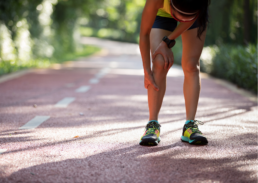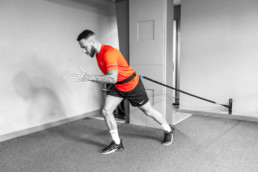Sports injuries
Waar er wordt gesport ontstaan er sportblessures. Veiligheid.nl (1) heeft over het jaar 2020 een onderzoek gedaan naar het aantal, soort en sport specifieke blessures. Goed om te zien is dat ondanks
 de corona maatregelen en geen drastische afname is in het sportgedrag in Nederland.
de corona maatregelen en geen drastische afname is in het sportgedrag in Nederland.
Aantallen:

In 2020 is te zien dat het aantal sportblessures minder is dan de jaren daarvoor. Ook wel te verklaren omdat door de corona maatregelen het sportklimaat in Nederland veelal toch drastisch is gewijzigd. Zo is er in de blessures een duidelijke verschuiving te zien van minder georganiseerde team sporten naar meer individuele duursporten, wandelen en fietsen.
Hierbij moet opgemerkt worden dat deze daling van het aantal blessures logisch is gezien er bij de trainingen en wedstrijden bij de teamsporten een hoger risico is op blessures dan bij de (vaak) lager intensieve duursporten.
Hardlopers hebben de meeste blessures:
Waar in eerdere jaren veldvoetbal de sport was met de meeste blessures, werd deze plaats in 2020 ingenomen door hardlopen met 1,1 miljoen blessures, 22% van het totaal (in 2019 stond hardlopen op plek 3 met 780.000 blessures). Door de coronamaatregelen was veldvoetbal, vooral competitiewedstrijden, maar in beperkte mate mogelijk. Hardlopen was daarentegen in tijden
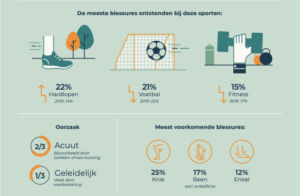
van lockdown erg populair, wat een stijging van het aantal blessures tot gevolg had. Dit komt naast dat er meer is hardgelopen ook doordat veel mensen zijn begonnen met hardlopen. Een beginnende sporter loopt vaak meer risico op een blessure.
Ondanks de blessures cijfers zijn wij van mening dat het belangrijk is om te blijven sporten! Blijf werken aan je fitheid en vitaliteit, vooral in deze periode. Ook je immuunsysteem is gebaad bij sportactiviteiten.
Onze sportproducten op Shop - PerformanceTrainers.nl en onze sportschema's op Training schedules - PerformanceTrainers.nl kunnen hierin helpen.
Wil je meer weten over hardloopblessures lees onze blog hierover!
- https://www.veiligheid.nl/sportblessures/actueel/forse-toename-hardloopblessures-door-lockdown-in-2020
- “Risk factors for overuse injuries in short- and long-distance running: A systematic review.” Dennis van Poppel, Maarten van der Worp, Anouk Slabbekoorn, Sylvia S.P. van den Heuvel, Marienke van Middelkoop, Bart W. Kroes, Arianne P. Verhagen, Gwendolyne G.M. Scholten-Peeters. Uit de Journal of Sport and Health Science episode 10 (2021) pag. 14-28
Sprint training #1
Many athletes want to improve their speed and explosiveness. Sprint training and strength training are some methods that can contribute to this. In this blog you will find some recent studies explained and how you can get started.
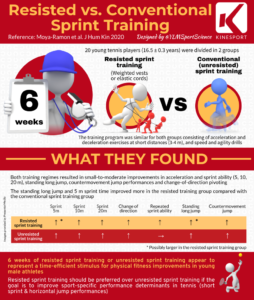
Sprint training by sprinting with resistance:
Sprinting with resistance is a good way to improve your sprint. Research among 20 young tennis players shows that short sprints and jumping power improve when sprinting with resistance. A weight vest or resistance band was used for this (Moya-Ramon et al J Hum Kin 2020). After training for 6 weeks of short sprints of 3-4 meters and after that had an improvement. Training with resistance bands or sprint trainer can effectively contribute to your sprint training.
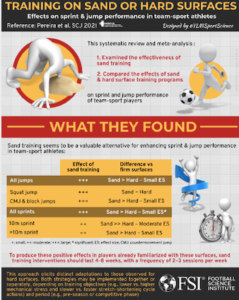
Sprint training on different surfaces:
Can the surface you sprint on be of added value for your performance? Apparently yes, research shows that sprint training 2-3x a week for 4-8 weeks in the sand can have a positive effect on your sprint and jumping power (Pereira et al 2021). Before everyone starts building a sandbox. In addition to resistance training (strength training), sprint training on a hard surface also improves the ability to sprint and jump.
Improve your sprint training through strength training?
Strength training is a common way to get stronger and improve your ability to sprint. But what exactly should you do? Research (Pandy et al 2021) shows that the calves and hamstrings have to provide a lot of power during sprinting. So it seems wise to train them properly. In addition, the glutes play an important role, larger glutes and other hip extensors provide a more powerful push-off and therefore a greater sprint ability (Miller et al 2020). You can train your hamstrings well with, for example, a glutebridge and make it even more challenging with the aqua trainer.
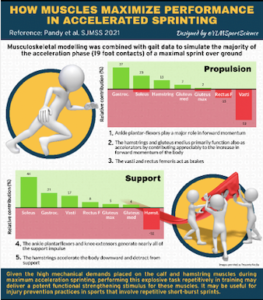
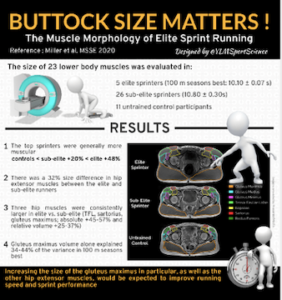
How do you best fill in your sprint training?
For your sprint training, here are some exercises that will help with this.
Train your calves:
During the soleus with the aquatrainer from the archer's position, you mainly train the thigh and hip muscles. By using the aqua trainer we also train trunk stability and arm strength.
Attention points for this exercise:
- Take a big step forward and lower your back knee to just above the ground
- Lift the heel of your front foot as high as possible
- Keep the back straight (don't pull hollow)
Train your hamstrings:
During the Single leg bridge with chest press explosive with aqua trainer you mainly train the thigh, hip muscles, chest and shoulder. By using the aquatrainer pro we also train trunk stability.
Attention points for this exercise:
- Lie on your back, grab the aquatrainer with both hands and hold it on your chest. Do the pro band short around your knees.
- Lift 1 leg straight and keep your knees at the same height.
- Explosively lift the buttocks off the mat and stretch the aquatrainer upwards at the same time.
- Keeps the trunk stable
- Then lower the buttocks and aquatrainer
Sprinting with resistance:
During the Squat jump sprint + sprint trainer pro you mainly train leg muscles. By using the sprint trainer do you have extra resistance?
Attention points for this exercise:
- Stand on 2 legs with sprint trainer band around the hips
- Jump on 1 legs as high as possible
- Try to land as softly as possible by sinking your knee well and staying on the front feet
- Sprint forward as quickly as possible after landing

